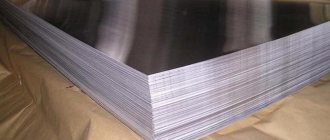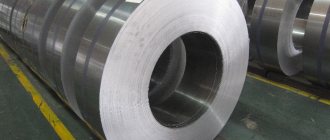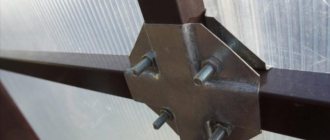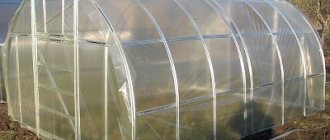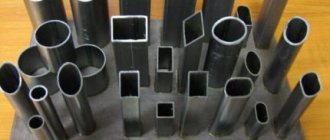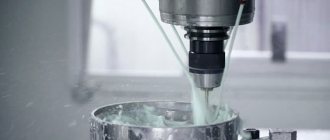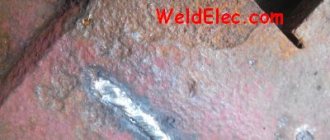There is an opinion that welding pipes is a fairly simple technological operation that even a beginner can handle.
Indeed, it would seem that there is nothing complicated here. The parts are quite large, the connecting surfaces are well adjusted to each other and processed, the material is of high quality. At first glance, there is everything necessary to form an aesthetic and durable seam!
In practice, however, it turns out completely differently. This process is quite difficult, especially when it comes to the formation of a full-fledged pipeline operating under pressure. The best specialists are attracted to work with its segments.
Why is this happening? How to perform high-quality welding without significant experience? What tips and tricks should you follow?
Selecting Electrodes
The preparatory stage includes the selection of the most suitable electrode. The quality of this consumable material determines the tightness of the resulting system, as well as the complexity of welding. Today, electrodes are used, which are represented by a conductive rod with a special coating. Through the use of a special composition, the arc is stabilized and a more attractive, high-quality weld is formed. Additionally, in some cases, the included chemicals reduce the likelihood of metal oxidation.
There are quite a large number of different versions of such consumables on sale. According to the type of core there are:
- With a core that does not melt. In their production, graphite or tungsten, as well as electrical coal, are used.
- With a melting rod. In this case, wire is used in manufacturing, the thickness of which can vary over a wide range. When carrying out electric welding, the thickness of the electrode is the most important parameter that needs to be taken into account.
Consumable Rod Electrodes
Classification is also carried out according to what substance is used as a coating. The most widely used versions are:
- Rutile acid is often used to create a heating pipeline system or supply water for domestic purposes. During electric welding, slag can form, which is not difficult to remove.
- Cellulose ones are more suitable for working with products that have a large cross-section. An example is the case of manufacturing a pipeline for supplying gas and water.
- Rutile is used when you need to get a neat seam. Removing slag from the surface is simple and quick. In addition, it is suitable for welding a second or subsequent seam.
- Rutile-cellulose is suitable for welding in almost any plane. This point determines their frequent use when creating a long vertical seam.
- The main coating is considered a universal coating that is suitable for electric welding of a wide variety of parts, including thick-walled products. The resulting fastener is characterized by plasticity and high strength.
Rutile electrodes
It is recommended to pay attention to products from well-known manufacturers, whose declared performance characteristics will correspond to real ones. In addition, when choosing consumables, you need to pay attention to the shelf life of the product.
Is it possible to carry out work using electric welding?
If the owner of an apartment or private house is familiar with electric welding firsthand, he can independently replace the heating battery and pipes. This does not require permission from the fire department, since the work does not involve an open flame. For welding heating systems, it is better to get an inverter. It automatically maintains the arc parameters at a given level, so the seams are of better quality than when working with a simple welding machine
It is also important to be able to select the electrodes correctly, since the reliability of the connection depends on this
After completion of the work, hidden flaws can only be identified after filling the system. In a private house there is no problem with this. For testing, the pressure on the boiler is set to 2 times the nominal pressure. In apartment buildings, if the replacement took place in the summer, you will have to wait for pressure testing, which is carried out before the start of the heating season. Any defects noticed must be reported to the house management or the welder who performed the replacement.
Types of welding joints
Welding work can only be carried out if you take into account exactly what welding seams can be found. The most widespread are:
- Placing and butt welding of parts. In this case, the products should be placed next to each other.
- A T-joint is characterized by the fact that the products are located at right angles to each other.
- The overlap fastening method has become more widespread due to the ease of welding and quality control of the resulting joint.
As a rule, in the case under consideration, the electric butt welding method is used. This ensures a high-quality connection of individual elements.
How to use gas welding (video)
Using gas welding to replace batteries in an apartment building is the most acceptable and reliable method. The seams at the joints allow them to withstand strong pressure and prevent damage to the integrity and tightness of the heating system.
Replacing heating batteries with gas welding (from 4 pcs)
4000 RUR
Replacement of heating batteries with gas welding (from 2 pcs.)
4500
Replacement of heating batteries with gas welding (1 pc.)
5000 RUR.
Estimating
0 rub.
Today, a wide variety of materials are freely available, and on the Internet you can find any instructions and, of course, try to replace heating devices yourself
But can you then be sure of the reliability of the result of your work? After all, it is not enough to select high-quality materials; it is important to thoroughly follow the process technology. Otherwise, you can be left without precious heat at the most inopportune moment - for example, in the midst of winter frosts. So, it is obvious that installing radiators using gas welding is a process that requires an exclusively qualified approach
And, having become more familiar with the technology, you can easily verify this
So, it is obvious that installing radiators using gas welding is a process that requires an exclusively qualified approach. And, having become more familiar with the technology, you can easily verify this.
Replacing heating batteries with gas welding: the essence of the process
It is equally important to choose the right special equipment for welding work. You will need to purchase a generator (acetylene or some other gas), as well as an oxygen cylinder and gas reducers. And, of course, the welding device itself
It can be a torch or a cutter with a set of replaceable tips. The mandatory list of equipment also includes: a rubber hose, which is necessary to transfer gas to the tool from cylinders, a fire-preventing valve
And, of course, the welding device itself. It can be a torch or a cutter with a set of replaceable tips. The mandatory list of equipment also includes: a rubber hose, which is necessary to transfer gas to the tool from cylinders, and a fire-preventing valve.
Replacing heating batteries with gas welding requires that you achieve strong connections, which means that you need to approach the installation of equipment and the choice of welding method as responsibly as possible. You can choose from several existing types of connections, the most popular of which is butt. But if the material used has a thickness of more than 5 mm, then you will already have to choose a Y- or X-shaped edge groove. The most profitable and economical methods of cutting pipes are oxygen, manual and mechanized.
As you already understand, replacing heating radiators with gas welding is a process that requires preliminary study in theory and then consolidation in practice. But few people, of course, want to train on a real object.
If you contact us for help, you will be able to consult on all your questions, as well as receive information on the approximate cost of replacing heating radiators.
The final estimate can be drawn up by a specialist who will conduct a final assessment of the property in person. And then you will only need to prepare the room for the start of work. To do this, it is better to remove excess furniture, cover floor coverings and protect interior details.
Our specialists will do the rest: deliver materials and equipment, agree on draining the central heating risers, and perform pressure testing of the system.
If desired, you can also order the transfer of radiators and risers to a more convenient location, as well as organize the installation of a boiler in a private house for an autonomous heating solution.
Our company is also distinguished by an individual approach to each client. You will be kept informed of each stage of installation, and your wishes will be taken into account when choosing materials for replacing heating batteries with gas welding. Our specialists are ready to answer every question you have, and the final result will be an effective and reliable solution for heating your home.
Preparing parts
Before carrying out electric welding, the parts to be joined should be prepared. The recommendations are as follows:
- The evenness of the cut is checked, which should be 90 degrees.
- The end and surrounding surface are cleaned with sandpaper and other abrasive until a metallic sheen appears.
- All types of contaminants must be completely removed.
Preparation for welding, cleaning with a grinder
At the time of welding, all elements must be firmly fixed.
Which electrodes are best for welding profile pipes 1.5 - 3 mm
Welding electrodes are best used with rutile or basic coating. For beginners, in our opinion, the best electrodes are OK-46, OZS-12, MP-3, which contain rutile as a coating. It provides easy ignition and stable arcing. In order to properly weld the structure, it is necessary to pay special attention to assembly.
In most cases, structures are assembled using tacks. We place potholders along the edges of the parts to be joined. After tack welding, we adjust the welding current on the test part. These parameters vary for different brands of electrodes. On the packaging with electrodes, the manufacturer gives general recommendations and applies them, setting the current values.
The profile pipe can be welded together either end-to-end, overlapping, or at an angle of 90 degrees. Carrying out the process on a test part, we change the current parameter to achieve optimal weld geometry.
The metal should not be burned, and the welding arc should burn steadily and be easily excited. For example, for MP-3 electrodes with a diameter of 2.5 - 3 mm. You can use a welding current in the region of 75-80 A.
Welding modes, welding current strength and joint dimensions must be taken from the technical sheet. If you need technical maps, you can write to us using the feedback form located at the very bottom of the page. We will send you technical maps specifically for your case by email.
The smaller the electrode diameter, the lower the current strength, and therefore the product will heat up less. When welding thin products, it is recommended to use electrodes as thin as possible so as not to burn through the metal.
Pipe welding
A fairly common question is how to weld pipes using electric welding. Inverters and other devices are characterized by ease of use, as well as the ability to accurately adjust output parameters. Welding of metal pipes is carried out taking into account the information below:
- The joint must be continuous.
- Once you start welding, you don't need to stop.
- All work must be carried out in several layers, thereby ensuring tightness. The number of seams depends on the thickness of the walls.
When considering how to weld pipes, you need to pay attention to the fact that each previous layer must cool completely.
Welding of pipes using electric welding should be carried out with control of the resulting fastening. In addition, the weld on the pipe is promptly cleaned of slag and other contaminants.
Fistula removal
How to weld a water pipe using electric welding with the maximum degree of reliability? The exact instructions depend on the nature of the damage. Let's start with how to eliminate a fistula in a water pipe, that is, a round hole from which liquid oozes.
In this case, you need to take a position that allows you to clearly observe the boundaries of the damage, and the electrodes are held perpendicular to the base to minimize the volume of water falling on them. Work is carried out from top to bottom until the hole is completely hidden by the deposited metal.
The procedure is as follows:
- metal is fused to the upper part of the fistula;
- 2 blows are made with a hammer immediately after the arc goes out. This promotes compaction of the material and eliminates pore formation;
- the cycle repeats from top to bottom;
- if there is thinning of the walls along the edges of the hole, they are strengthened using the method described above;
- when steam stops oozing out, the pipe wall becomes stronger. The current is set to a minimum to prevent through burning. The required volume of material is gradually deposited;
- To increase strength, the formed seam is tapped.
Process Features
The process under consideration has a fairly large number of features. When welding pipes, the following information is taken into account:
- The polarity of the current is selected depending on the wall thickness, type of material and the selected electrode. It is worth considering that all information about the parameters under which the electrode should be used is indicated by the manufacturer.
- It is worth considering that the connection of pipes is also carried out taking into account the current strength. This indicator can be determined by multiplying the thickness of the rod by 30 or 40. The current strength that is installed on the device is determined in a similar way.
- The speed of welding is not regulated in any technical documentation. However, you should not keep the electrode in one place for a long time, as this can lead to smudges. In addition, too high a temperature can lead to burning of the edge.
In order to simplify the task, preliminary fastening of the elements to be connected is carried out. Such welding features must be taken into account in order to improve the quality of the connection.
Do-it-yourself pipeline welding
Before you start directly welding the pipeline, you need to complete the following preparations:
- Clean the parts to be joined from coatings, oxides, grease and dirt.
- If there are significant irregularities at the ends of the pipes or their deformation, it is advisable to carefully trim them to obtain an ideal cut that can easily be joined to the same part.
- Cleaning the internal and external surfaces near the edge of the pipe to a depth of 10 mm or more to the state of pure metal.
Read also: Needle vibrator for concrete
Steel pipes, as a rule, are butt welded and require welding of all edges along the height of the walls. To reduce the beads protruding into the pipeline, the angle of inclination of the electrode during welding should be less than 45 degrees relative to the horizontal.
The pipe welding process itself involves continuous processing of their joints until final welding. Rotary and non-rotary joints between pipes, the width of the walls of which does not exceed 6 mm, are boiled at least 2 times, that is, in 2 layers. When the wall thickness increases from 6 to 12 mm, 3 seams are applied, more than 19 mm - four, and so on.
A feature of pipe welding is that due to the need to overlap seams and the welding technology, which requires preliminary cleaning of the welded surface, the procedure for cleaning the surface from scale will have to be carried out after each layer in order to weld the next one onto it. As in most installation work, in this case the first seam is the most important and determines the quality of the entire work.
The entire edge of the pipe with its notches and bluntness should completely melt into it. This initial, fundamental seam is especially carefully examined for cracks and, if present, they are melted or cut out, repeating the welding of the fragment again.
The second and further layers are applied by slowly and smoothly turning the already made pipe connection. The end and beginning of all layers must be shifted relative to the previous one by 15-30 mm. The final layer is applied, making a smooth transition from the seam to the main pipe with a cleaned edge.
To ensure maximum quality of the seam, each subsequent layer is applied in the opposite direction relative to the previous one, that is, if the first was clockwise, then the second should be counterclockwise and vice versa. Closing the layers of the seam is not done end-to-end, but with a margin on each other - staggered.
Welding pipes yourself is quite a difficult task, but this is one of the most common types of work required from any welder. Therefore, if you want to master it, it is not only possible, but it can also be extremely useful and profitable. To do this, you just need to understand the principles and technology of welding, and after a little practice on the easiest exercises, you can further hone your skills up to the level of professionals.
Electric welding technology is used to connect metal heating pipes. In this material you will find videos that will introduce you to this technology and you will be able to cope with the work yourself.
We bring to your attention a series of videos that will introduce you to the general theory of electric cooking. You will learn which electrodes are best to use in your work, as well as how to prepare pipes for welding.
This video shows the welding process itself. The wizard will tell you how to choose the current and describe the stages of work.
Continuing the topic - the next video.
The fourth lesson on pipe welding will tell you how to use special electrodes for welding pipes TsU-5.
In the last video, the master will tell you why second passes are needed and describe the intricacies of working with different types of electrodes.
If you need to insert heating pipes, this video will help you get the job done.
Another video tutorial for beginner welders that will teach you how to weld small diameter pipes.
“>
Assembling joints
Pre-assembly of joints greatly simplifies the task. The features of this stage are as follows:
- The pipes are fixed in clamps. If the fastening is carried out at three points, the fixation will be more reliable.
- If there is only one connection point, it is recommended to start welding from the reverse side.
- If the walls are about 3 mm thick, then the thickness of the rod should be 2.5 mm.
The most difficulties arise with welding pipes that cannot be secured in a vice.
Fiberboard or MDF?
For a final definition of what MDF is and how it differs from fiberboard, a description of the production technology is sufficient. Fiberboard, known as hardboard, stands for fibreboard, produced by wet pressing of wood dust. Manufacturing technology does not allow fiberboard to be thick. The common thickness of fiberboard is 3.2 mm. The thickness of the MDF board can exceed 20 mm.
When making shaped and bent products from MD semi-finished products, the thickness is determined by the dimensions of the part. Fiberboard serves as a furniture element in the form of a back wall or bottom of pull-out shelves of cabinet furniture. Fiberboard is fastened without pre-drilling holes. To fasten MDF boards, dowels or hardware are often used, for which it is necessary to prepare a hole by drilling. The thickness of the slab allows surface milling. Wood glue is excellent for gluing.
Welding rotary and non-rotary joints
Pipe welding technology changes slightly if you need to connect joints of this type. The features are as follows:
- Cooking is carried out using a special rotator, for which the required speed is set.
- Care is taken to ensure that the weld pool is positioned correctly.
Grooving edges for butt joints
Similar work can be done with the usual workpiece fastening, the pipe is rotated approximately 90 degrees. The most difficult thing to cook is when turning the workpiece 180 degrees.
Where to start the preparatory stage?
The first thing those who want to learn how to cook need to do is purchase the necessary equipment . The complete kit that will be required to complete such work will include:
- welding machine;
- set of electrodes;
- hammer for beating off slag;
- brush.
When choosing an electrode, you need to pay attention to its diameter, which will be determined by the thickness of the metal sheet being welded . You should also take care of protection. For welding we need:
- welding mask with a special light filter;
- thick clothes with long sleeves;
- gloves, preferably made of suede.
The tools required for welding work must include a welding rectifier, transformer or inverter. It is with the help of these devices that the problem of converting alternating current into direct current will be solved, which will allow welding.
